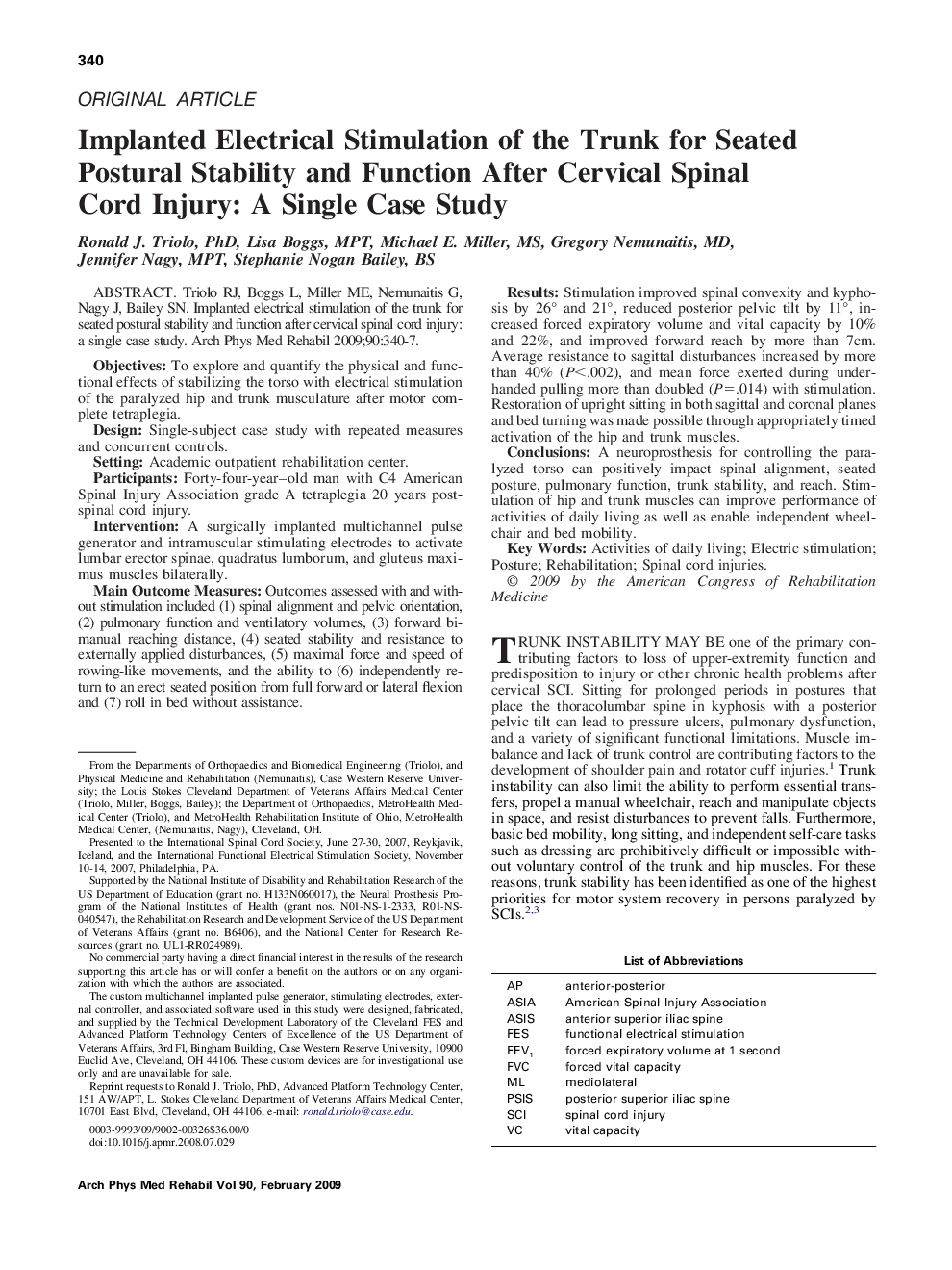| کد مقاله | کد نشریه | سال انتشار | مقاله انگلیسی | نسخه تمام متن |
|---|---|---|---|---|
| 3451125 | 1595769 | 2009 | 8 صفحه PDF | دانلود رایگان |

Triolo RJ, Boggs L, Miller ME, Nemunaitis G, Nagy J, Bailey SN. Implanted electrical stimulation of the trunk for seated postural stability and function after cervical spinal cord injury: a single case study.ObjectivesTo explore and quantify the physical and functional effects of stabilizing the torso with electrical stimulation of the paralyzed hip and trunk musculature after motor complete tetraplegia.DesignSingle-subject case study with repeated measures and concurrent controls.SettingAcademic outpatient rehabilitation center.ParticipantsForty-four-year–old man with C4 American Spinal Injury Association grade A tetraplegia 20 years postspinal cord injury.InterventionA surgically implanted multichannel pulse generator and intramuscular stimulating electrodes to activate lumbar erector spinae, quadratus lumborum, and gluteus maximus muscles bilaterally.Main Outcome MeasuresOutcomes assessed with and without stimulation included (1) spinal alignment and pelvic orientation, (2) pulmonary function and ventilatory volumes, (3) forward bimanual reaching distance, (4) seated stability and resistance to externally applied disturbances, (5) maximal force and speed of rowing-like movements, and the ability to (6) independently return to an erect seated position from full forward or lateral flexion and (7) roll in bed without assistance.ResultsStimulation improved spinal convexity and kyphosis by 26° and 21°, reduced posterior pelvic tilt by 11°, increased forced expiratory volume and vital capacity by 10% and 22%, and improved forward reach by more than 7cm. Average resistance to sagittal disturbances increased by more than 40% (P<.002), and mean force exerted during underhanded pulling more than doubled (P=.014) with stimulation. Restoration of upright sitting in both sagittal and coronal planes and bed turning was made possible through appropriately timed activation of the hip and trunk muscles.ConclusionsA neuroprosthesis for controlling the paralyzed torso can positively impact spinal alignment, seated posture, pulmonary function, trunk stability, and reach. Stimulation of hip and trunk muscles can improve performance of activities of daily living as well as enable independent wheelchair and bed mobility.
Journal: Archives of Physical Medicine and Rehabilitation - Volume 90, Issue 2, February 2009, Pages 340–347